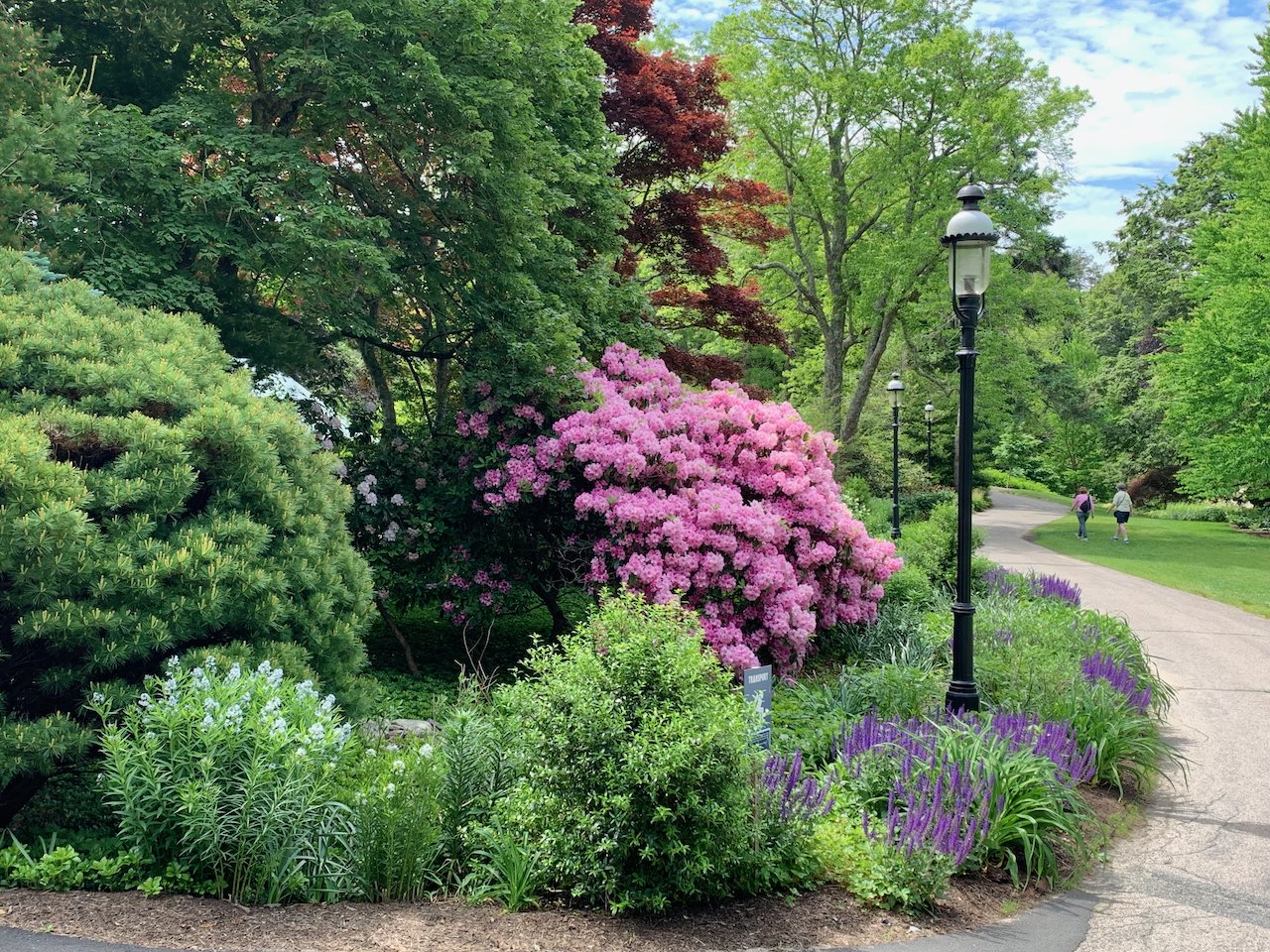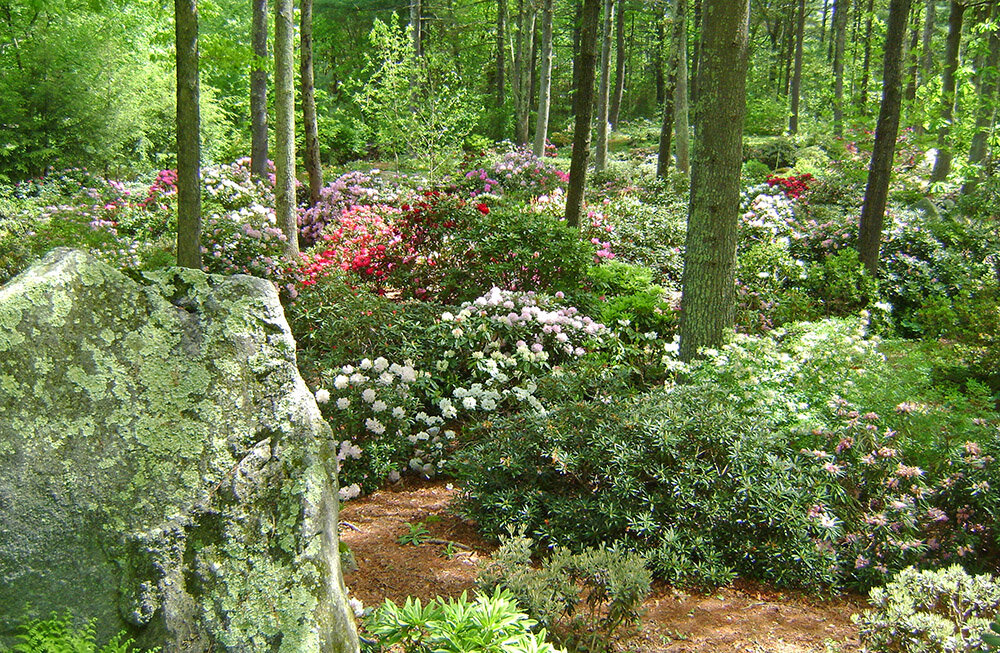Entering Rhododedron Trusses in a Flower Show
/The following advice on preparing a truss for showing was written in 1983 by Evie Cowles for the Mass. Chapter of the Rhododendron Society Newsletter. It is a useful guide for those who wish to enter a rhododendron truss in a flower show.
1. Perfect condition is essential. This means healthy, unblemished foliage to set off the florets. If you think of the leaves as a frame for a picture, you will appreciate how insect bites or browning reduces aesthetic appeal. The large-leaved variety, ideally, is presented as a truss sitting on a perfect circle of leaves.
2. Blossoms should be open, but not over-mature. One with a still-closed bud is preferable to another with florets on the point of dropping. This particularly applies to the selection of azaleas.
3. As with most cut flowers, rhododendrons benefit from a 24-hour hardening-off period to prevent wilting during the show. The stem is trimmed before plunging the truss up to its neck in lukewarm water. Set the truss in a cold, draft-free spot for 24 hours. If a heavy rain is predicted before the show, cut your perfect trusses and extend this for a few days.
4. Before the truss is placed on display, it’s a good idea to make a fresh cut of the stem base.
5. Very early rhododendron varieties can be shown out of season if they have been kept in cold storage. The truss is stored dry in a sealed plastic bag in a refrigerator until the day before the show. (It is also helpful to inflate the bag by blowing air into it, as if it were a balloon. This will prevent the plastic from damaging the tissues of the truss).
6. All the care in the world up to this point is useless if the trusses are bashed en route to the show. For a short drive, it’s fine to lay them in shallow boxes. For a longer distance, it’s better to put them upright in water in pop bottles or cans that are braced to prevent tipping or crowding.
7. If you have a truss of an unusual, difficult, or particularly beautiful variety, even if the foliage is in poor condition, enter the truss and you will likely get at least an Honorable Mention. Many times, your newest plants are still quite small so that if gypsy moths or weevils chew the foliage, there are not a lot of other trusses to choose from – and these are the very cultivars that others are eager to see. So be brave and enter your new or unusual less-than-perfect trusses.
You Might Also Like











